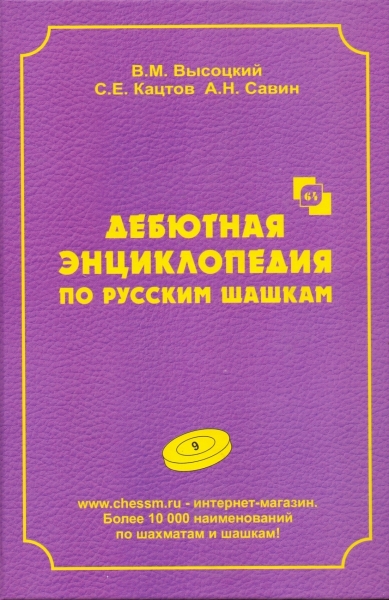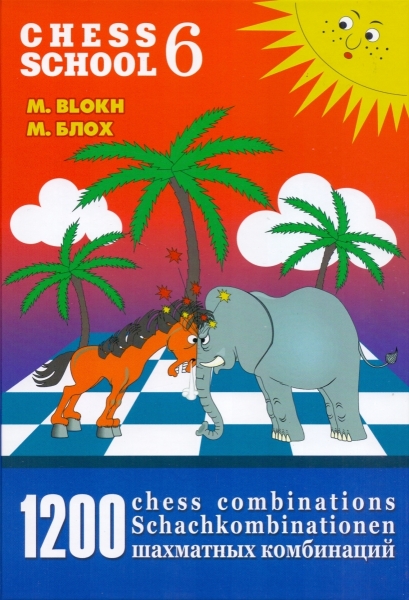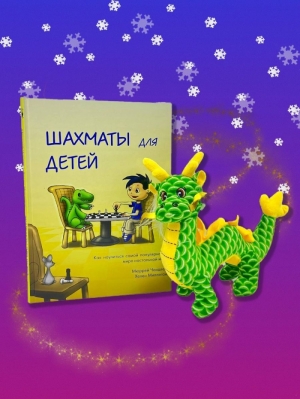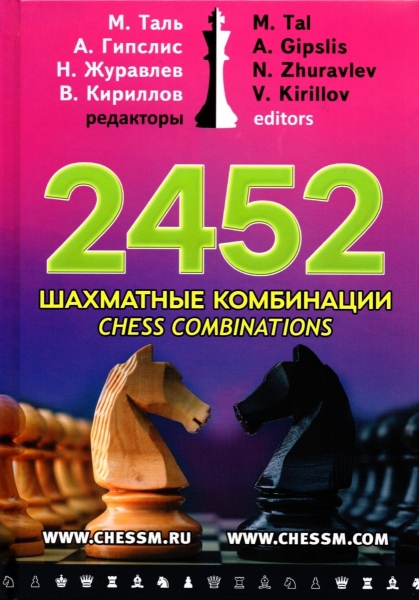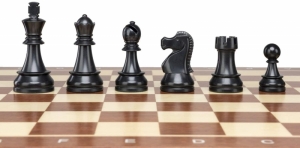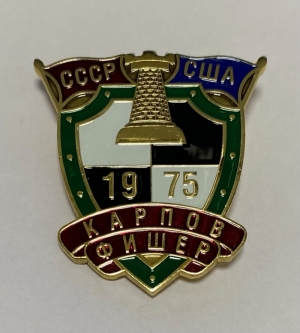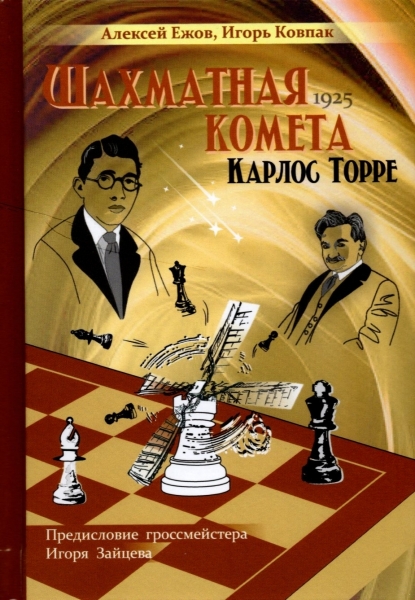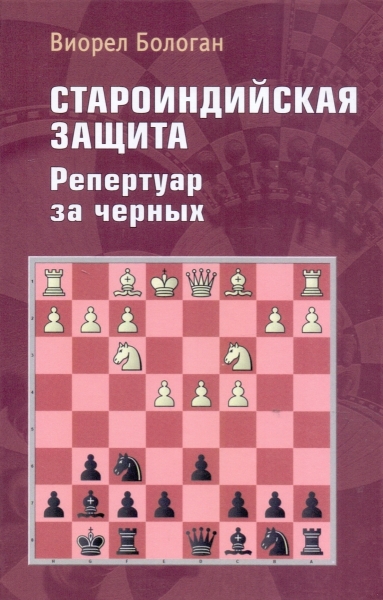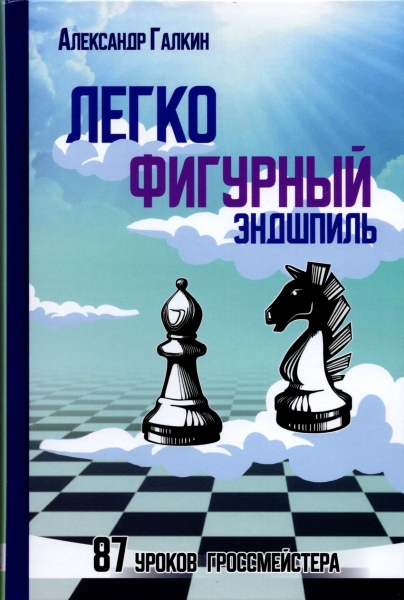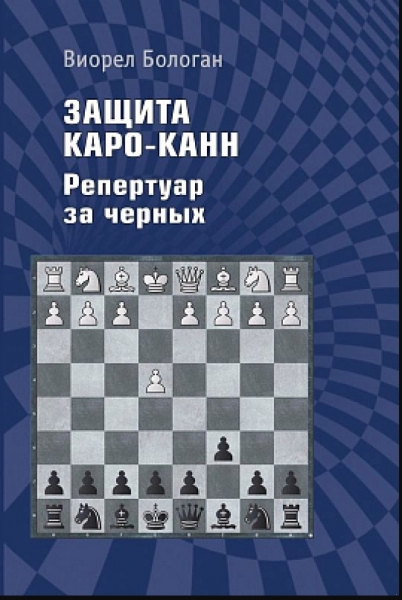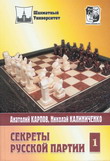Secrets of the Russian Party-1
- Publisher: Russian CHESS House
- Author(s): Kalinichenko, Karpov
- Language: Russian
- Volume: 176
- Binding: solid
- DateOfIssue: 2007
paper book
12.43 $
Description:
Your attention is invited to a monograph on one of the most popular open debuts - the Russian party. The idea of a counterattack that underlies the Russian game after 1.e4 e5 2.Kf3 Kf6! Is so attractive that this debut is constantly found at all major competitions, including matches for the World Championship. The author of the book, multiple world champion Anatoly Karpov, has repeatedly tested the Russian game in matches against Garry Kasparov, Gata Kamsky and in major tournaments of our time. His co-author - grandmaster Nikolai Kalinichenko - the author of numerous monographs on the theory of chess, has been working on the theme of the Russian party for more than 20 years. The book is based on a unique card file, which contains many batches and analyzes that have not been published in print and electronic databases. Work is broken into three volumes. The first one is devoted to such sharp and interesting schemes as the Cochran gambit 4.K: f7!?, Variant 5. Xcz !, A. Shirov’s formidable weapon and other interesting possibilities. The authors as comfortable as possible offer the reader to plunge into the fascinating world of the Russian party and to comprehend its innermost secrets.
ОГЛАВЛЕНИЕ
Предисловие......................................... 3
Расположение материала.............................. 6
ЧАСТЬ ПЕРВАЯ. Редкие продолжения
1. e4 e5 2.Cf3 Cf6................................. 8
Глава первая 3.Cc3 Eb4........................ 8
Глава вторая 3.Ec4 Ce4 4.Cc3 C:c3 5.dc f6 6.0-0 15
Глава третья 3.d3............................. 24
ЧАСТЬ ВТОРАЯ
1.e4 e5 2.Cf3 Cf6 3.C:e5......................... 30
Раздел первый. Редкие ответы черных.............. 30
Глава четвертая. «Оптимистический гамбит» 3...C:e4 4.Ie2 30
Глава пятая 3...Ie7........................... 38
Раздел второй. 3...d6............................ 40
Глава шестая. Гамбит Кохрена 4.C:f7........... 40
Глава седьмая. Вариант Паульсена 4.Cс4........ 57
Раздел третий. На подходах к основному варианту.. 72
Глава восьмая. 5.d3........................... 72
Глава девятая. 5.Cс3.......................... 75
Глава десятая. 5. с4.......................... 96
Глава одиннадцатая. 5.Ed3.................... 110
Глава двенадцатая. 5.Ie2 Ie7 6.d3 Cf6 7.Eg5 114
Примерные партии.................................. 145
Указатель партий.................................. 170
ПРЕДИСЛОВИЕ
Настоящая монография посвящена одному из самых популярных открытых дебютов – русской партии, возникающей после ходов: 1.e4 e5 2.Cf3 Cf6.
MKKKKKKKKN
I/(+47,?0J
I$#$#@#$#J
I?@?@?(?@J
I@?@?$?@?J
I?@?@!@?@J
I@?@?@%@?J
I!"!"?"!"J
I.%*16)@-J
PLLLLLLLLO
Основная идея дебюта – активная защита посредством контрнападения: черные предпочитают не защищать атакованную пешку е5, а контратаковать пешку соперника на е4. Подобный метод игры, проникнутый духом большой активности, может привести в ряде вариантов к живой интересной борьбе.
Рассматриваемый дебют известен с XVII века. Одна из первых партий, дошедших до нас, датируется 1620 годом.
Греко – NN
1.e4 e5 2.Cf3 Cf6 3.C:e5 C:e4 4.Ie2 Ie7 5.I:e4 d6 6.d4 f6 7.f4 Cd7 8.Cc3 de 9.Cd5 Id6 10.de fe 11.fe Ic6 12.Eb5!
MKKKKKKKKN
I/@+@7,?0J
I$#$'@?$#J
I?@3@?@?@J
I@)@%"?@?J
I?@?@1@?@J
I@?@?@?@?J
I!"!@?@!"J
I.?*?6?@-J
PLLLLLLLLO
12...Ic5 13.Ee3 I:b5 14.C:c7+ Kd8 15.C:b5. Черные сдались.
Этот и подобные ему примеры навели игравших черными на мысль о некорректности дебюта, и ход 2...Cf6 был надолго отвергнут. И лишь в 30-х годах XIX века выдающийся русский мастер А.Д. Петров открыл ход 3...d7-d6!, отбрасывающий коня с е5, после чего можно уничтожить белую пешку е4.
В разработке новой системы защиты активное участие принял другой известный русский мастер К.А.Яниш, опубликовавший в 1842 году в «Паламеде» подробные анализы дебюта.
Благодаря значительному вкладу наших соотечественников в развитие дебюта за ним закрепилось его современное название – «Русская партия». В западной шахматной литературе более употребительно другое название – «Защита Петрова».
Постепенно русская партия обретает все большую популярность, ее стали применять на практике, анализировать лучшие шахматисты мира. Так, Г.Стаунтон в своем шахматном руководстве «Хандбух» (1847) посвятил русской партии целый раздел.
М.И.Чигорин в «Курсе дебютов» дает русской партии следующую оценку: «Весьма остроумным и довольно сильным ходом надо признать защиту Петрова... Ход 2...Cg8-f6 угрожает неприятельской пешке, составляет контригру и стремится уравнять положение. За ним следуют весьма остроумные и замысловатые комбинации».
В конце XIX – начале XX века русская партия входила в дебютный репертуар ряда выдающихся мастеров: Г.Пильсбери, Р.Тейхмана, К.Шлехтера, Ф.Маршалла. Однако по мере развития теории и роста популярности полуоткрытых начал она встречается реже. Стремление черных с первых же ходов завязать сложную асимметричную игру не вписывалось в основные схемы дебюта.
Но постепенно пытливый взор исследователей вновь обратился к ходу 1...e7-e5, и здесь достойное место заняла русская партия. Свидетельством тому стало применение этого начала в соревнованиях самого высокого ранга – матчах на первенство мира Спасский – Петросян (Москва, 1969), Каспаров – Карпов (Москва, 1984/85, Лондон – Ленинград, 1986 и Нью-Йорк – Лион, 1990), Крамник – Леко (Бриссаго, 2004). Многие выдающиеся шахматисты обращались к этому дебюту. Среди них чемпионы мира: В.Стейниц, Х.Р.Капабланка, А.Алехин, М.Эйве, В.Смыслов, М.Таль, Т.Петросян, Б.Спасский, А.Карпов, Г.Каспаров и В.Крамник. Претенденты на это звание: С.Решевский, Д.Бронштейн, В.Корчной, Б.Ларсен, Л.Портиш, В.Горт, Р.Хюбнер, Я.Тимман, А.Юсупов, Я.Сейраван, Дж.Спилмен, Н.Шорт, В.Салов, В.Иванчук, А.Широв, В.Ананд, М.Адамс, Р.Касымжанов и др.
Большой вклад в развитие теории русской партии внесли: В.Микенас, П.Трифунович, Р.Холмов, А.Суэтин, Г.Форинтош, И.Зайцев, М.Дворецкий, С.Макарычев, А.Михальчишин, А.Кочиев и др.
Монография состоит из трех томов.
В первом разделе Первого тома рассмотрены попытки борьбы белых за дебютное преимущество, не связанные с ходами 3.C:e5 и 3.d4. Второй раздел Первого тома посвящен редким продолжениям, которые связаны с 3.Cf3:e5. В третьем разделе Первого тома – на подступах к основному варианту – будут разобраны все оригинальные направления игры после ходов 3…d6 4.Cf3 C:e4. Одной из первых дошедших до нас партий, где черные испытывали рекомендованное Петровым 3...d6, стала встреча Перигаль – Сент-Аман (Лондон, 1843): 1.e4 e5 2.Cf3 Cf6 3.C:e5 d6 4.Cf3 C:e4 5.d3 Cf6 6.Eg5?! h6 7.Eh4 Ee7 8.Ee2 0-0 9.0-0 Ee6 10.Cc3 d5 11.d4 c6 12.Ce5 Cbd7 13.f4 Ef5.
MKKKKKKKKN
I/@?4?07@J
I$#@',#$?J
I?@#@?(?$J
I@?@#&+@?J
I?@?"?"?*J
I@?&?@?@?J
I!"!@)@!"J
I.?@1@-6?J
PLLLLLLLLO
14.Ed3 Eh7 15.E:h7+ K:h7 16.Id3+ Kg8 17.Gae1 c5 18.C:d7 I:d7 19.E:f6 c4 20.G:e7 I:e7 21.E:e7 cd 22.E:f8. Черные сдались.
Второй том посвящен основному варианту русской партии – 1.e4 e5 2.Cf3 Cf6 3.C:e5 d6 4.Cf3 C:e4 5.d4!
В третьем томе рассматривается система с 3.d2-d4. В 1842 году в Берлине это продолжение прошло серьезную проверку в матче одного из сильнейших немецких мастеров того времени Т.Лаза с К.Янишем:
1.e4 e5 2.Cf3 Cf6 3.d4 ed 4.e5 Ce4 5.Ed3 d5 6.C:d4 c5 7.Ce2 Cc6 8.f3 Cg5 9.f4 Ce6 10.0-0 Ib6 11.Kh1 Ee7 12.Cbc3 Cc7.
MKKKKKKKKN
I/@+@7@?0J
I$#(?,#$#J
I?4'@?@?@J
I@?$#"?@?J
I?@?@?"?@J
I@?&)@?@?J
I!"!@%@!"J
I.?*1@-@5J
PLLLLLLLLO
13.b3 Cb4 14.Cg3 C:d3 15.I:d3 Ic6 16.f5 g6 17.Ef4 E:f5 18.C:f5 gf 19.I:f5 Ig6 20.Eg3 h5 21.I:g6 hg 22.e6 C:e6 23.Gae1 Gf8? 24.G:f8+ C:f8 25.C:d5. Черные сдались.
Впоследствии ход 3.d4 взял на вооружение первый чемпион мира В.Стейниц, и всей системе было присвоено его имя.
Заключают каждый том монографии примерные партии, которые не только иллюстрируют практическое применение идей, изложенных в теоретической части, но и содержат дополнительную информацию.
Необходимо отметить, что черные сегодня научились получать в русской партии интересные, содержательные позиции с шансами на перехват инициативы, что делает этот дебют весьма перспективным.
РАСПОЛОЖЕНИЕ МАТЕРИАЛА
Часть первая. Редкие продолжения
1.e4 e5 2.Cf3 Cf6 ................................ 8
Глава первая
3.Cc3 Eb4.......................................... 8
I. 4.C:e5 0-0 5.Ee2 Ge8 6.Cd3 E:c3 7.dc C:e4.. 10
A. 8.0-0...................................... 10
Б. 8.Cf4...................................... 11
II. 4.Ec4....................................... 12
Глава вторая
3.Ec4 C:e4 4.Cc3 C:c3 5.dc f6 6.0-0.............. 18
I. 6...Cc6...................................... 19
II. 6...d6....................................... 20
III. 6...g6...................................... 21
IV. 6...Ie7..................................... 22
Глава третья
3.d3............................................... 24
Часть вторая
1.e4 e5 2.Cf3 Cf6 3.C:e5 ....................... 31
Раздел первый. Редкие ответы черных................ 31
Глава четвертая. «Оптимистический» гамбит
3...C:e4 4.Ie2 Ie7 5.I:e4 d6 6.d4 de 7.de Cc6... 33
I. 8.Eb5........................................ 34
II. 8.Cc3....................................... 36
Глава пятая
3...Ie7............................................ 38
Раздел второй.
3...d6............................................. 40
Глава шестая. Гамбит Кохрена
4.C:f7 K:f7....................................... 40
I. 5.Ec4+....................................... 41
II. 5.d4......................................... 43
A. 5...Ee7 6.Cc3............................. 45
1) 6...Ge8.................................. 45
2) 6...c6................................... 47
Б. 5...g6 6.Cc3............................... 47
1) 6...Kg7................................. 48
2) 6...Ie8................................. 50
a) 7.Ec4+................................ 51
б) 7.Ed3................................. 51
В. 5...с5..................................... 53
Глава седьмая. Вариант Паульсена
4.Cc4 C:e4........................................ 58
I. 5.Cc3........................................ 59
II. 5.Ie2....................................... 63
III. 5.d4........................................ 65
Раздел третий. На подходах к основному варианту
4.Cf3 C:e4........................................ 72
Глава восьмая
5.d3............................................... 72
Глава девятая
5.Cc3.............................................. 75
I. 5...d5?!...................................... 75
II. 5...Cf6..................................... 78
III. 5...C:c3 6.dc Ee7.......................... 83
A. 7.Ed3...................................... 83
Б. 7.Ef4 0-0 8.Id2 Cd7 9.0-0-0 Cc5.......... 87
1) 10.Ee3..................................... 88
2) 10.Cd4..................................... 90
В. 7.Ee3........................................ 91
Глава десятая
5.c4............................................... 96
I. 5...d5........................................ 96
II. 5...Ee7..................................... 99
A. 6.Cc3..................................... 100
Б. 6.d4...................................... 102
III. 5...Cc6................................... 106
Глава одиннадцатая
5.Ed3............................................. 110
I. 5…Cf6....................................... 110
II. 5…d5........................................ 112
Глава двенадцатая
5.Ie2 Ie7 6.d3 Cf6 7.Eg5........................ 115
I. 7...Ee6 8.Cc3............................... 117
A. 8...Cc6................................... 118
Б. 8...Cbd7.................................. 120
В. 8...h6.................................... 121
II. 7...Cbd7 8.Cc3 I:e2+ 9.E:e2 h6........... 125
A. 10.Ed2.................................... 127
Б. 10.Eh4.................................... 129
III. 7...I:e2+ 8.E:e2 Ee7 9.Cc3............... 132
A. 9...h6.................................... 133
Б. 9...Ed7................................... 135
В. 9...c6.................................... 138
1) 10.0-0.................................. 138
2) 10.0-0-0 140
Далее>>
-
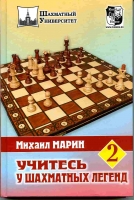 Learn From Chess Legends. Volume 2
Author:
Learn From Chess Legends. Volume 2
Author:
Marin 16.67 $ -
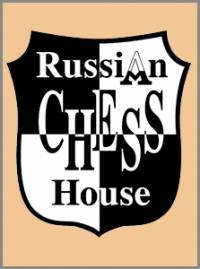 International Tournament in Bled
Author:
International Tournament in Bled
Author:
Kmoch 116.67 $ -
 Эндшпиль
Author:
Эндшпиль
Author:
Rabinovich 123.33 $ -
 The second international chess tournament Moscow 1935 (there are also rare copies on white paper + 30% to the price)
Author:
The second international chess tournament Moscow 1935 (there are also rare copies on white paper + 30% to the price)
Author:
Weinstein 166.67 $ -
 The third international chess tournament (there is also a copy without an introductory article by Krylenko at a price of minus 30%) (art. 7)
200.00 $
The third international chess tournament (there is also a copy without an introductory article by Krylenko at a price of minus 30%) (art. 7)
200.00 $
-
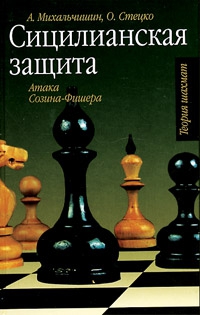 Sicilian Defense: Attack of Sozin-Fisher
Author:
Sicilian Defense: Attack of Sozin-Fisher
Author:
Mihalchishin 50.00 $ -
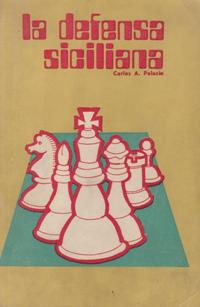 Sicilian Defense
Author:
Sicilian Defense
Author:
Palacio 25.00 $ -
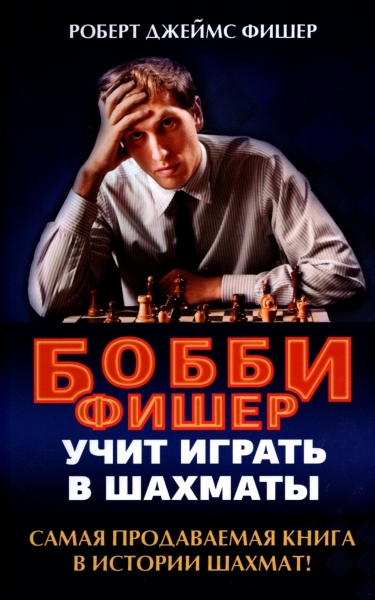 Author:
Author:
Fisher 15.00 $ -
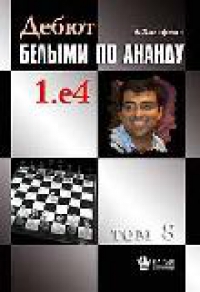 White
Author:
White
Author:
Khalifman 41.67 $ -
 White
Author:
White
Author:
Khalifman 60.00 $
 Русский
Русский  Английский
Английский 